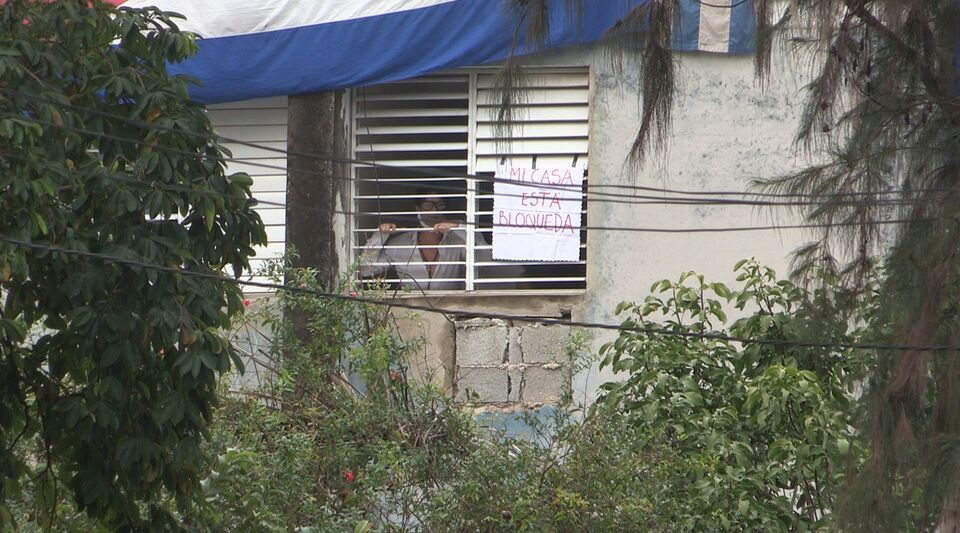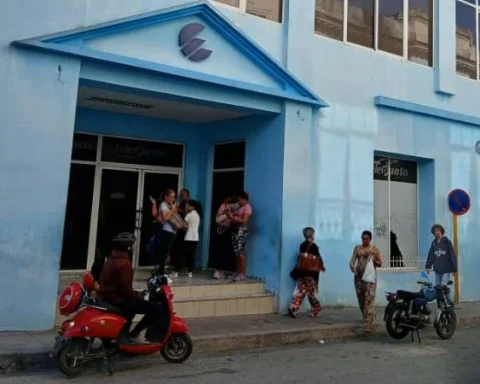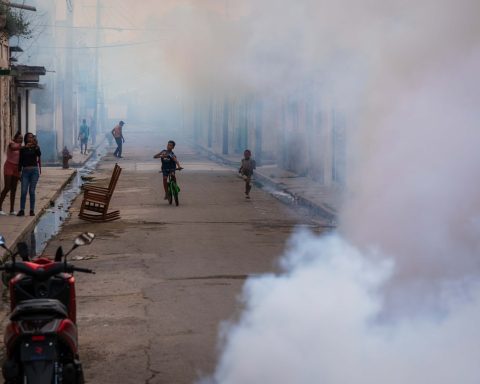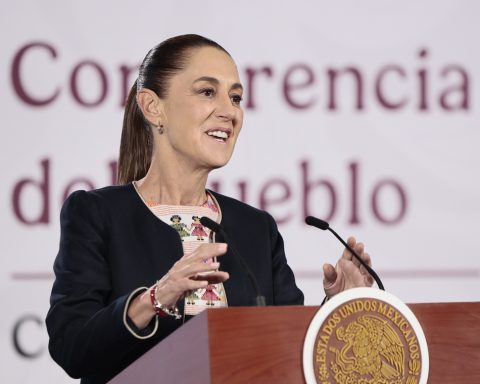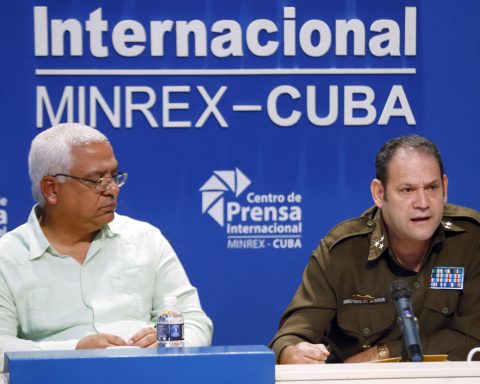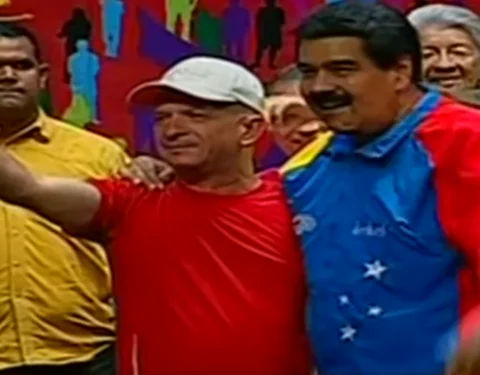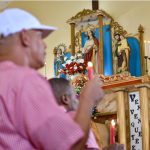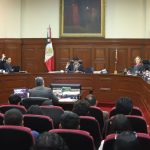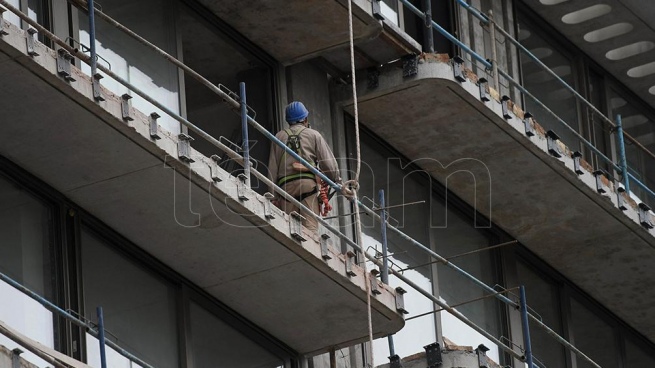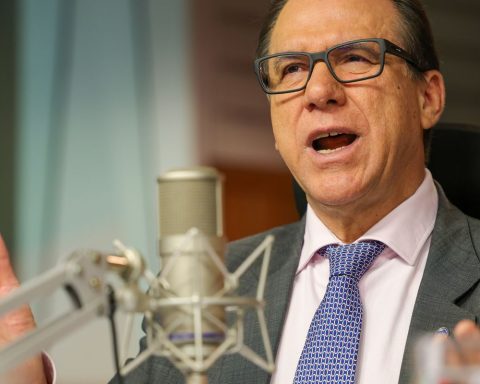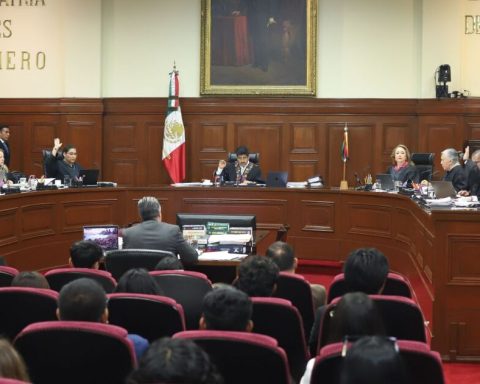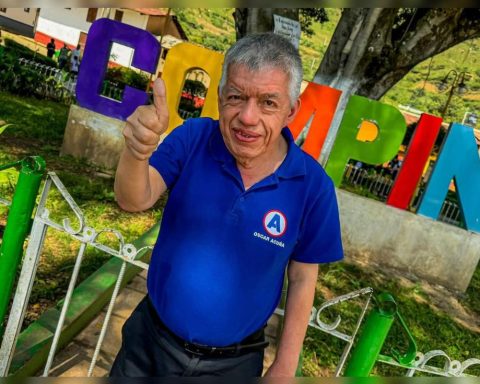The playwright Yunior García Aguilera could not fulfill his plan to walk dressed in white with a rose in his hand at 3 o’clock in the afternoon down 23rd Street in El Vedado to the Malecón in Havana. Police and State Security agents and members of the Rapid Response Brigades prevented him from setting foot on the street, tried to completely cover his window by displaying Cuban flags and kept the international press who had approached until the place as far away as they could, expelling her violently from the start.
So far, García Aguilera has not been detained and his house is still fenced off under police surveillance, and his communications are still cut off by the Government.
“This down here in the house is very violent, they have attacked the press, they were simply parked with their car and a mob was on top of them,” he denounced 14ymedio Dayana Prieto, Garcia’s wife, this morning. “Since the early hours of the morning they have been gathering in the school that is in front of the house and in the basement of the building,” he added.
“Right now they have just expelled some journalists who arrived in a car, they made an act of repudiation, they refused to leave, they began to yell ‘get out’, to push the car until finally they made them leave, they are already in plan violent, “said the playwright in an audio shared with the Archipelago platform.
“Nobody here in the house now has mobile service of any kind,” he explained a few minutes later to 14ymedio Garcia’s wife. “In front of the door of our apartment there are many people and everything is besieged around, I see it through the blinds. There are full buses, many cars, I think there is a group on the corner that seems to be from the press because of their credentials but without cameras, I don’t know if they have been forbidden to wear them. “
García had also denounced the siege in a Facebook broadcast: “Today my house woke up under siege, the entire building is surrounded by State Security agents in civilian clothes posing as a town, as they usually do, that does not surprise any Cuban. There are cars on all corners and groups even underneath my building on the stair step “.
“They know that I was going to do a solo march carrying a white rose down 23 Avenue from Parque Quijote to the Malecón, that does not violate any right, on the contrary, it is my human and constitutional right to walk as a free citizen wearing only a white rose, but apparently they are not even willing to allow that, “he lamented.
“When the time is right I will leave my house despite the fact that there is a mob in the surroundings, despite the fact that we have already seen the violence against these accredited journalists.” García considers that “in recent years we have seen how this violence grows and how this hateful language grows, how this discrimination grows and how this idological apartheid grows”.
To define the prevailing model on the island, the activist remarked that “it is not even the rule of law nor is it a republic nor is it anything, it is a tyranny,” and asked at three in the afternoon to applaud for the Cubans. “Applause for us, for the people of Cuba, we have spent too much time applauding others, applauding leaders, applauding figures with power. It is time to applaud that desire for freedom and that joy that we have.”
In relation to the expulsion of the foreign correspondents that both saw from the apartment window, the activist of the Archipelago platform details that he went “with shouts and blows (…) they were repudiated, they expelled them, they refused to leave because they have every right, they even wanted to push the car to get it off the block and finally they made them leave with shouts, threats. “
“We are living very ugly days in Cuba, unfortunately we are returning to the worst times; to the times that Cuban artists know very well … that gray five-year period”
“We are living very ugly days in Cuba, unfortunately we are going back to the worst times; to the times that Cuban artists know very well … that gray five-year period, those acts of terrible repudiation between some Cubans and others,” García commented in reference to to the years between 1971 and 1975 when censorship was extended to the island’s cultural policy.
“TO some young people allow them, for example, demonstrating in Central Park because they are favorable to what they call revolution, because it stopped being so a long time ago and that it has removed all its masks because it has been shown that it is a very conservative dictatorship. They allow them to demonstrate, to block the statue of the national hero who is the hero of all Cubans, who was not the private property of anyone, and not us, “he denounced.
Beyond the fence that surrounded García Aguilera’s house, the presence of agents was a constant throughout El Vedado, according to several collaborators of 14ymedio. From the University of Havana to 23rd Street and throughout Avenida G, the presence of police officers, State Security agents and forces of the rapid response brigades, most of them dressed in red pullovers, was visible.
“There are university boys with brand tennis shoes and new pullovers that say ‘Fidel anti-imperialist’, ‘Cuba lives’. I also saw many women with red pullovers and Che’s face in black and strong surveillance in the university areas,” he said. to this newspaper a young man who today was walking down Calle L, in El Vedado.
In the park that is in front of the Hotel Colina, and in which there is a Wi-Fi zone and a bus stop, it was empty and full of uniformed policemen, while on L street the presence of groups of boys dressed in red was once again noticeable.
In El Quijote Park, on 23 and J streets, there was a food sale fair in which clowns played games for adults, since only two or three children came with their parents, some from the provincial government. Two of the tents sold “piccolo” bread for three pesos and round loaves for 80 cents, although the supply was limited and you could only buy two of the first and five of the round ones.
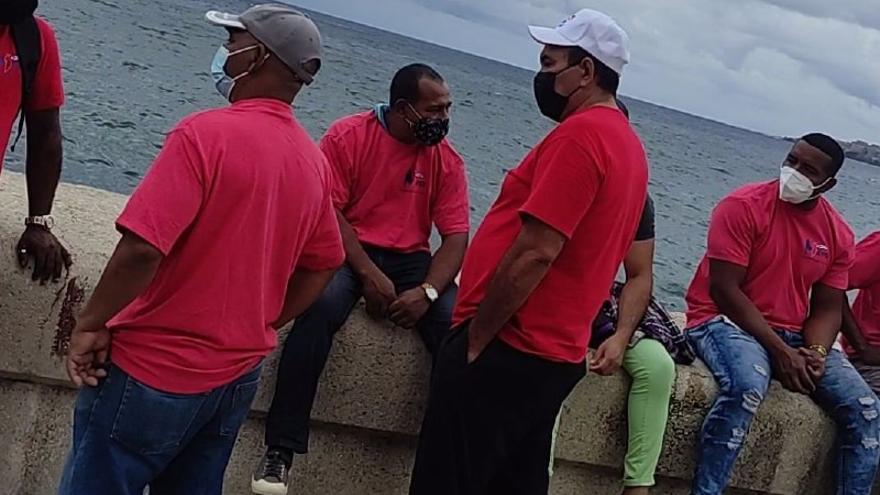
“Here most of the people seem to be waiting for something. On G street you see young people who look like students, from the Federation of High School Students or the Union of Young Communists, but those from Don Quixote look grumpy and their appearance It is unkind. In the Ministry of Foreign Trade there are many people outside and music, by Infanta and La Rampa. In all places they were wearing red pullovers, even on the Malecón and the institutions and ministries of La Rampa, they all have red and black flags of the July 26 Movement, “another boy described.
On a day that dawned rainy and continued with intervals of drizzle and downpours, Havana was especially empty in some areas as central as the vicinity of Infanta and Carlos III, the areas near the University and San Lázaro Avenue. Many preferred to stay at home and those who left found an obvious operation by uniformed officers and plainclothes officers.
In front of each ministry, state work center, store or warehouse, there were custodians, often in pairs or larger groups. With special attention they looked at anyone who carried a mobile phone in their hand and, in several cases verified by this newspaper, passers-by were questioned for taking a photo. “As soon as I took out my cell phone I noticed that several men began to stare at me,” explained a young man who stood in line this Sunday at the central Coppelia ice cream parlor.
On Saturday night, a group that identifies itself as “Los Pañuelos Rojos” held a “sit-in” in Central Park, right in front of the statue of José Martí. Elízabeth Rodríguez, one of the coordinators of this project, underlined to Radio clock the marked “anti-imperialist character” of the initiative, which, as he specified, will last 48 hours.
________________________
Collaborate with our work:
The team of 14ymedio He is committed to doing serious journalism that reflects the reality of deep Cuba. Thank you for joining us on this long road. We invite you to continue supporting us, but this time becoming a member of our journal. Together we can continue transforming journalism in Cuba.
